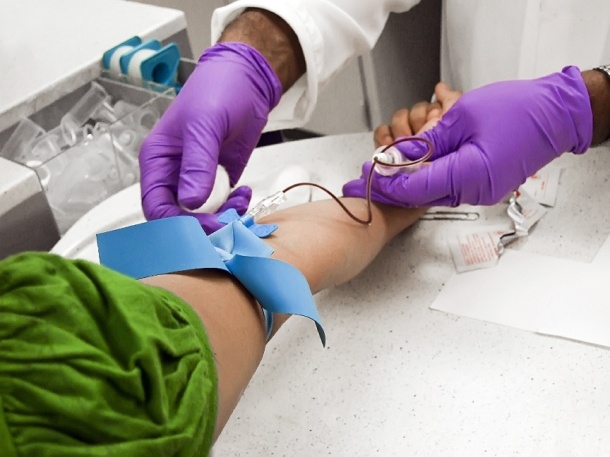So you’ve gotten your blood drawn for your yearly physical or for insurance purposes and the results are back. The blood draw results look like hieroglyphs and you’re not about to call the nurse or wait to get back in with the doctor so he can interpret them for you. This post is meant to clear up some of the confusion surrounding the results of a CBC.
Lipids
Your lipid results include your Triglycerides, your Cholesterol, and your TC/HDL Ratio.
Triglycerides are blood lipids that allow for the transference of adipose tissue and blood glucose from the liver. A desirable range for a fasted individual is <150 mg/dL.
Cholesterol is a sterol (modified steroid) required to build and maintain membranes & allows for proper nerve functioning. Contrary to popular belief, cholesterol is not the enemy; it is produced by your body to ensure the healthy functioning of many systems. Dietary cholesterol, while occasionally a cause for concern, is not necessarily the main driver in undesirable levels. LDL (the ‘bad’ kind of cholesterol) is driven up by the consumption of refined carbohydrates and trans fats. HDL (the ‘good’ kind of cholesterol) is driven up by the consumption of mono- & poly-unsaturated fats. Total cholesterol should be no more than 200 mg/dL.
LDL cholesterol should be no more than 70 mg/dL while HDL cholesterol is most desirable when it is above 60 mg/dL.
Your Total Cholesterol to HDL Cholesterol Ratio is a useful number when it comes to predicting a patients risk for heart disease. The amount of HDL Cholesterol to Total Cholesterol is important because it illustrates the amount of protective HDL particles that are present compared to the total number of particles. A number below 4:1 is desirable. 
Thyroid Hormones
When testing for the health of your thyroid, most doctors will concentrate primarily on Thyroid Stimulating Hormone (TSH) to determine whether there is an issue with your thyroid gland. To learn more about your thyroid (and how to treat it right) read my 2 part article titled ‘Your Best Thyroid‘. Your TSH levels should be between.4-4.2 mU/L. Anything out of this range will be considered cause for considering hypo- (under active) or hyper- (overactive) thyroid.
Vitamin D
The prevalence of testing for Vitamin D has increased by leaps and bounds over the last few years. Vitamin D has gotten a lot of attention due to the fact that deficiency in this fat-soluble vitamin can be responsible for many issues, including weight gain, depression, osteoporosis, and an increased risk for cardiovascular disease.
Check out this table for adequate Vitamin D levels according to several different organizations:
| Vitamin D Council | Endocrine Society | Food and Nutrition Board | Testing Laboratories | |
| Deficient | 0-39 ng/ml | 0-20 ng/ml | 0-11 ng/ml | 0-31 ng/ml |
| Insufficient | 21-29 ng/ml | 12-20 ng/ml | ||
| Sufficient | 40-80 ng/ml | 30-100 ng/ml | >20 ng/ml | 32-100 ng/ml |
| Toxic | >150 ng/ml |
Most agree, however, that levels around 50 ng/mL is appropriate for most adults. See my previous article on how to take Vitamin D supplements if you feel concerned that you’re not getting enough of this Vitamin either in your diet or by synthesizing it from the sun.
Fasted Blood Glucose
 This test is most useful for securing a diagnosis of prediabetes or full-blown diabetes mellitus (type II). This test is always performed after the subject has fasted for 8-12 hours. Proper levels of blood glucose in a fasted patient are between 65-100 mg/dL. Anything higher and you could be looking down the barrel of a devastating metabolic disease.
This test is most useful for securing a diagnosis of prediabetes or full-blown diabetes mellitus (type II). This test is always performed after the subject has fasted for 8-12 hours. Proper levels of blood glucose in a fasted patient are between 65-100 mg/dL. Anything higher and you could be looking down the barrel of a devastating metabolic disease.
Homocysteine
Homocysteine levels are a reliable indicator of heart attack risk. Homocysteine is produced as a byproduct of methionine metabolism. Homocysteine levels should stay under 7.2 µmol/L.
Getting a proper blood panel every year at your physical is an important part of staying on top of your health. Many things can be revealed in your CBC that will not be readily apparent in your everyday life. Use your CBC results to guide what (if any) supplements you take and to make adjustments to your lifestyle and diet.
Click the banner below to check out our Facebook page & follow this blog to stay up to date on posts like this from North Texas Fitness.






















